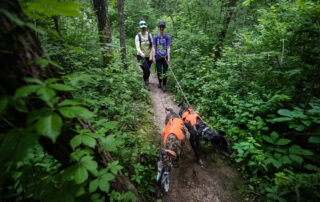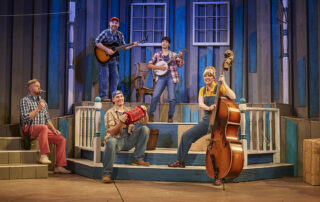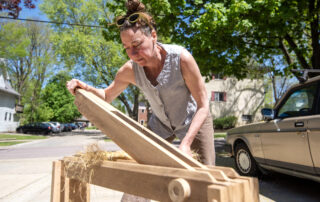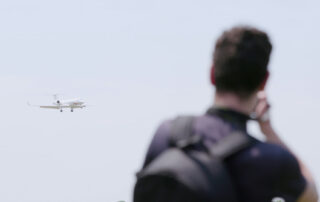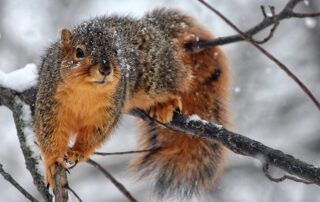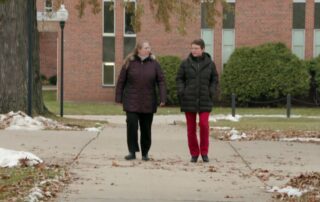Mark Hendrickson, Mark Hanson and Mark Johnson are best friends. The three Marks are like any group of friends – they vacation together, go on long bicycle rides, fix up old cars … and every April they’re on the road before dawn to take part in a tradition that spans over half of their lifetimes: they sit outside and count sandhill cranes.
The Annual Midwest Crane Count began in the 1970s with the mission to monitor the waning crane population, a figure that was heavily decimated in the mid-twentieth century due to hunting and habitat loss. As the species’ population has grown, so has the annual data collection effort. What began as a small group of volunteers has grown to include citizen scientists across seven states in the Midwest, all tasked with counting the sandhill cranes they may see or hear in a two-hour period. The data is sent in to the International Crane Foundation for population monitoring efforts.
Wisconsin alone has 1,200 counters, and the three Marks are among them.
“I hopped on board in 1979 – I think I might be the longest one in Wisconsin doing it,” Hendrickson says, the first of the three to have participated.
“Luckily Hendrickson keeps all the notes. Hanson and I don’t have to do anything, except look good,” joked Johnson.
While the three Marks might joke about each other’s involvement, the group’s dedication to the cause is clear. After four decades of crane counting, their seemingly casual nature as best friends is balanced with strict tradition and serious data collecting. Starting at 4 o’clock in the morning, the three head to their assigned site, Goose Island State Wildlife. Sipping coffee and trading jokes, they also take a moment to be sure they have everything they need before embarking on the 45-minute hike to the marsh. Hendrickson has his notebook, each counter wears a headlamp, and some years they don their snow boots. Today, the weather is moderate and a light jacket will suffice.
Once at the site and still in total darkness, the three wait for the first signs of nature’s awakening: bird calls, including the wake-up calls of sandhill cranes. “The birds are most active just before sunrise, that’s why we get out there that early,” said Hanson.
The group’s participation in the Count is as old as the friendships themselves. After participating by himself for the first few years, Hendrickson invited Hanson and Johnson to join. “They immediately accepted the invitation and have been vital to me in doing it and accompanying me in taking part in it,” Hendrickson said. Hanson began counting in 1980, and Johnson in 1983. Their wives, kids and other friends have joined, rotating into the group sporadically some years, but forty years later it’s the three Marks who are braving the cold and keeping the tradition alive.
“I do it for the camaraderie with the guys. And I do it because I’m interested in wildlife and nature,” said Hanson. For Johnson, he likes watching the sunrise and committing to the tradition. “Before I met Hendrickson, I’d never seen a sandhill crane,” he admitted.
“It means a lot for your good friends to pick up on something like this and be wholeheartedly interested in doing it,” Hendrickson said. The three Marks plan to carry on the tradition in 2024, and beyond.
Related Links for this Article
Birds of a feather: Longtime friends count cranes together in Wisconsin

